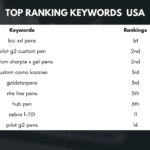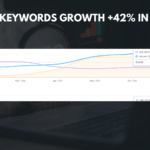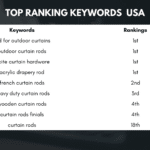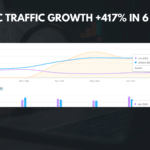
|
Getting your Trinity Audio player ready... |
LinkedIn is a popular social networking platform that is primarily used for professional networking and job searching. It allows users to create a profile, connect with colleagues and industry professionals, and showcase their skills and experience. While LinkedIn can be a valuable tool for career advancement, there are several reasons why someone might want to delete their account.
Key Takeaways
- Deleting your LinkedIn account can improve your digital well-being and protect your privacy.
- Before deleting your account, make sure to download your data and notify your connections.
- To delete your account, go to the settings page and follow the step-by-step guide.
- LinkedIn retains some of your data even after you delete your account, so be aware of their data retention policies.
- Consider using alternative professional networking platforms to replace LinkedIn.
Why you might want to delete your LinkedIn account
Privacy concerns are one of the main reasons why individuals choose to delete their LinkedIn account. With the increasing amount of personal information shared on social media platforms, many people are becoming more cautious about their online presence. LinkedIn collects a significant amount of data from its users, including employment history, education, and connections. Some individuals may feel uncomfortable with this level of data collection and prefer to remove themselves from the platform.
Another reason why someone might want to delete their LinkedIn account is that they find themselves spending too much time on the platform. LinkedIn can be addictive, with its constant stream of updates, job postings, and networking opportunities. This can lead to a significant amount of time being spent on the platform, which can be detrimental to productivity and overall well-being.
In addition to privacy concerns and time management issues, some individuals may find that using LinkedIn has a negative impact on their mental health. The pressure to constantly update their profile, connect with others, and seek out new job opportunities can be overwhelming for some people. This can lead to feelings of inadequacy or anxiety, which may prompt them to delete their account.
How to prepare for deleting your LinkedIn account
Before deleting your LinkedIn account, it’s important to take some steps to ensure that you don’t lose any important information. First, you should back up your data. LinkedIn allows users to download a copy of their data, including their profile information, connections, and messages. This can be done by going to the “Settings & Privacy” section of your LinkedIn account and selecting the “Download your data” option.
Next, you should save any important information that you want to keep. This could include recommendations, endorsements, or any other content that you have posted on your profile. You can do this by taking screenshots or copying and pasting the information into a document.
Finally, it’s a good idea to explore alternative networking options. There are several other platforms available that can be used for professional networking, such as Twitter, Facebook Groups, and industry-specific forums. Research these options and determine which ones might be a good fit for your needs.
Step-by-step guide to deleting your LinkedIn account
| Step | Description |
|---|---|
| Step 1 | Log in to your LinkedIn account |
| Step 2 | Click on your profile picture in the top right corner |
| Step 3 | Select “Settings & Privacy” from the dropdown menu |
| Step 4 | Click on “Account” in the left-hand menu |
| Step 5 | Scroll down to “Closing your LinkedIn account” and click “Change” |
| Step 6 | Follow the prompts to confirm the deletion of your account |
| Step 7 | Your account will be deleted within 24 hours |
Deleting your LinkedIn account is a relatively straightforward process. Here is a step-by-step guide to help you through the process:
- Access the account settings: Log in to your LinkedIn account and click on your profile picture in the top right corner of the screen. From the dropdown menu, select “Settings & Privacy.”
- Initiating the deletion process: In the “Settings & Privacy” section, click on the “Account” tab and then select “Closing your LinkedIn account” from the options on the left-hand side of the screen.
- Confirming the deletion: LinkedIn will ask you to confirm that you want to delete your account. Read through the information provided and click on the “Continue” button to proceed with the deletion process.
Once you have completed these steps, your LinkedIn account will be deactivated. However, it’s important to note that LinkedIn retains user data for a certain period of time.
Understanding LinkedIn’s data retention policies
LinkedIn retains user data for a period of 30 days after an account is deleted. During this time, the data is not accessible to other users and is only retained for security purposes. After 30 days, most of the user’s data is permanently deleted from LinkedIn’s systems.
However, it’s important to note that some data may still be accessible even after an account is deleted. For example, if a user has sent messages to other LinkedIn members, those messages may still be visible to the recipients even after the account is deleted. Additionally, if a user’s profile information has been shared with third-party applications or services, that information may still be retained by those parties.
What happens to your data after you delete your LinkedIn account
When a LinkedIn account is deleted, the user’s data is permanently removed from LinkedIn’s systems after 30 days. This includes profile information, connections, messages, and any other data associated with the account.
However, it’s important to note that there may be instances where some data is still accessible even after an account is deleted. As mentioned earlier, messages sent to other LinkedIn members may still be visible to the recipients. Additionally, if a user’s profile information has been shared with third-party applications or services, that information may still be retained by those parties.
Alternatives to LinkedIn for professional networking
If you decide to delete your LinkedIn account but still want to maintain a professional network, there are several alternative platforms that you can consider. Here are a few options:
- Twitter: Twitter is a popular social media platform that can be used for professional networking. You can follow industry professionals, participate in relevant conversations using hashtags, and share your own insights and expertise.
- Facebook Groups: Facebook Groups can be a great way to connect with professionals in your industry or field of interest. There are many active groups focused on various topics where you can engage in discussions and network with like-minded individuals.
- Industry-specific forums: Many industries have online forums or discussion boards where professionals can connect and share information. These forums often provide a more focused and targeted networking experience compared to broader social media platforms.
When considering alternative networking options, it’s important to research each platform and determine which ones align with your professional goals and interests.
How to notify your LinkedIn connections before deleting your account
Before deleting your LinkedIn account, it’s a good idea to inform your connections so that they are aware of your decision. Here are some best practices for notifying your connections:
- Personalize your message: Instead of sending a generic message to all of your connections, take the time to personalize each message. Mention specific interactions or experiences you’ve had with the person to make the message more meaningful.
- Be honest and transparent: Explain your reasons for deleting your LinkedIn account in a clear and honest manner. This will help your connections understand your decision and may even prompt them to reevaluate their own use of the platform.
- Offer alternative ways to stay in touch: If you still want to maintain a professional relationship with certain connections, provide alternative ways for them to reach out to you. This could include sharing your email address or inviting them to connect on another platform.
Here are some sample message templates that you can use as a starting point:
Template 1:
Subject: Important Announcement – Deleting My LinkedIn Account
Dear [Connection’s Name],
I hope this message finds you well. I wanted to reach out and let you know that I have made the decision to delete my LinkedIn account. This was not an easy decision, but after careful consideration, I feel that it is the right choice for me at this time.
I wanted to take a moment to express my gratitude for our connection on LinkedIn. I have enjoyed our interactions and appreciate the insights and knowledge that you have shared. I value our professional relationship and hope that we can stay connected in other ways.
If you would like to stay in touch, please feel free to reach out to me via email at [your email address]. I would love to continue our conversations and explore opportunities for collaboration outside of LinkedIn.
Thank you again for your support and understanding. I wish you all the best in your professional endeavors.
Warm regards,
[Your Name]
Template 2:
Subject: Transitioning Away from LinkedIn
Dear [Connection’s Name],
I hope this message finds you well. I wanted to reach out and let you know that I will be deleting my LinkedIn account in the coming days. This decision was not made lightly, but I feel that it is the right step for me at this time.
I wanted to take a moment to express my appreciation for our connection on LinkedIn. I have enjoyed following your updates and learning from your expertise. I value our professional relationship and hope that we can stay connected in other ways.
If you would like to continue our conversations or explore opportunities for collaboration, please feel free to reach out to me via email at [your email address]. I would love to stay in touch and continue supporting each other’s professional journeys.
Thank you for your understanding and support. I wish you all the best in your future endeavors.
Best regards,
[Your Name]
Tips for transitioning away from LinkedIn
Transitioning away from LinkedIn can be a challenging process, especially if you have relied heavily on the platform for professional networking. Here are some tips to help you navigate this transition:
- Identify alternative networking platforms: As mentioned earlier, there are several alternative platforms that can be used for professional networking. Take the time to research these options and determine which ones align with your goals and interests.
- Be proactive in reaching out: Don’t wait for others to reach out to you after deleting your LinkedIn account. Take the initiative to reach out to your connections via email or other platforms to let them know that you are still interested in maintaining a professional relationship.
- Attend industry events and conferences: In-person networking events can be a great way to meet new professionals and expand your network. Look for industry-specific events or conferences in your area and make an effort to attend.
- Join professional organizations: Joining professional organizations related to your field can provide valuable networking opportunities. These organizations often host events, webinars, and other activities that can help you connect with like-minded professionals.
- Stay active on other platforms: If you decide to join alternative networking platforms, make sure to stay active and engage with others. Share your insights and expertise, participate in discussions, and connect with new professionals.
Common mistakes to avoid when deleting your LinkedIn account
When deleting your LinkedIn account, there are a few common mistakes that you should avoid:
- Not backing up important data: Before deleting your account, make sure to back up any important data that you want to keep. This includes profile information, connections, messages, and any other content that you have posted on the platform.
- Not informing connections: It’s important to inform your connections before deleting your LinkedIn account so that they are aware of your decision. This shows respect for the professional relationships you have built and gives them an opportunity to stay connected with you through other means.
- Forgetting to cancel premium subscriptions: If you have a premium subscription on LinkedIn, make sure to cancel it before deleting your account. Failure to do so could result in continued charges to your credit card or PayPal account.
By avoiding these common mistakes, you can ensure a smooth transition away from LinkedIn.
The benefits of deleting your LinkedIn account for your digital well-being
Deleting your LinkedIn account can have several benefits for your digital well-being:
- Improved mental health: LinkedIn can be a source of stress and anxiety for many individuals. Deleting your account can help alleviate these feelings and improve your overall mental well-being.
- Reduced screen time: Spending excessive amounts of time on social media platforms like LinkedIn can contribute to increased screen time and decreased productivity. Deleting your account can help you break free from this cycle and reclaim valuable time for other activities.
- Increased privacy: By deleting your LinkedIn account, you can regain control over your personal information and reduce the amount of data that is collected about you. This can help protect your privacy and reduce the risk of data breaches or misuse of your information.
In conclusion, while LinkedIn can be a valuable tool for professional networking, there are several reasons why someone might choose to delete their account. Privacy concerns, excessive time spent on the platform, and negative impacts on mental health are just a few of the reasons why individuals may decide to remove themselves from LinkedIn. By following the steps outlined in this article and being mindful of common mistakes, you can successfully delete your LinkedIn account and transition to alternative networking options. Ultimately, deleting your LinkedIn account can have numerous benefits for your digital well-being, including improved mental health, reduced screen time, and increased privacy.
FAQs
What is LinkedIn?
LinkedIn is a social networking platform designed for professionals to connect with each other, build their professional network, and find job opportunities.
Why would someone want to delete their LinkedIn account?
There could be various reasons why someone would want to delete their LinkedIn account. Some common reasons include finding a new job, not finding the platform useful, or wanting to take a break from social media.
Is it possible to temporarily deactivate a LinkedIn account?
Yes, it is possible to temporarily deactivate a LinkedIn account. This means that your profile will be hidden from other users, but your data will still be saved on LinkedIn’s servers. You can reactivate your account at any time.
How can I delete my LinkedIn account?
To delete your LinkedIn account, you need to log in to your account, go to the “Settings & Privacy” section, click on “Account management,” and then select “Closing your LinkedIn account.” Follow the instructions provided to complete the process.
What happens to my data when I delete my LinkedIn account?
When you delete your LinkedIn account, your data will be permanently deleted from LinkedIn’s servers. This includes your profile, connections, messages, and any other data associated with your account. It is important to note that this process cannot be undone.























































